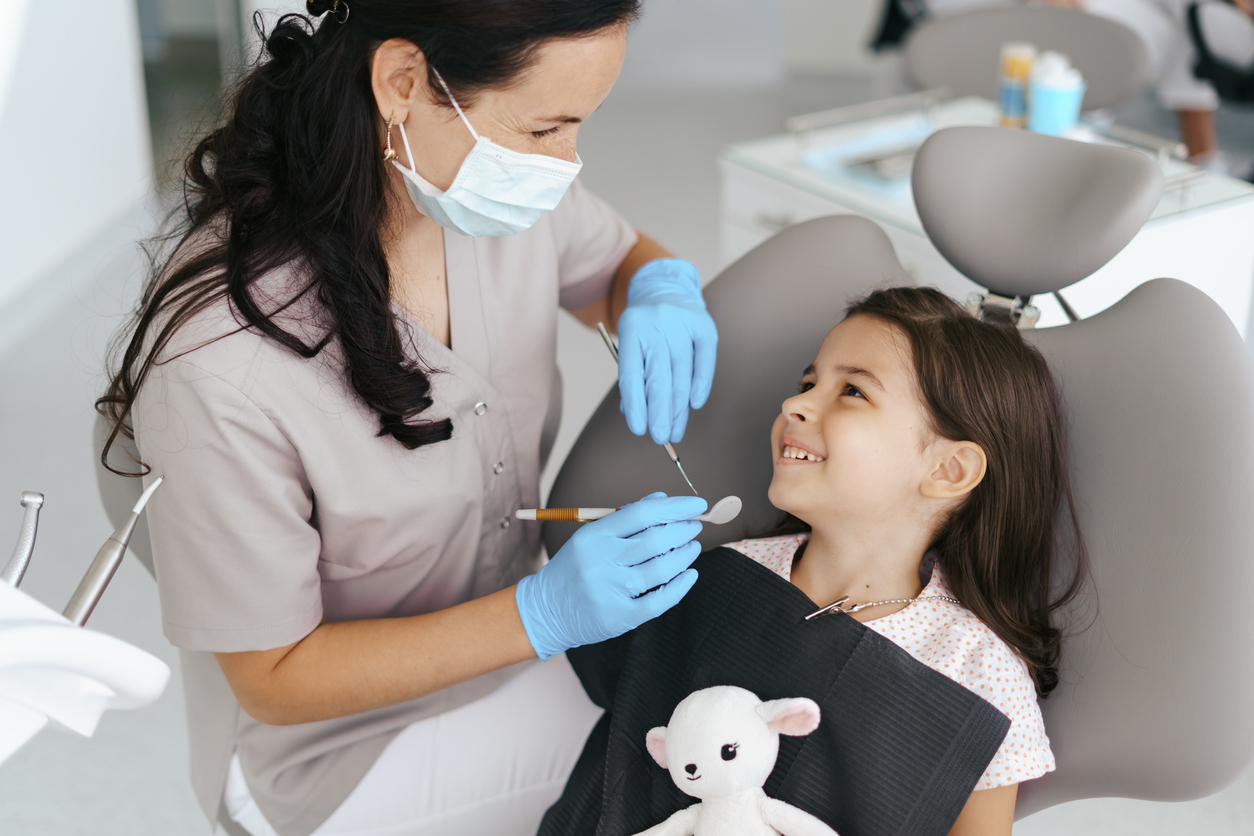
“Say Cheese!” February is National Children’s Dental Health Month
With all the Valentine’s Day candy now on sale, it can be tempting to buy your child a sweet treat.
But indulging in sugary food and drinks on a regular basis can cause an array of health problems, such as cavities and other dental health issues.
In recognition of National Children’s Dental Health Month, here’s five tooth-friendly snacks you can feed your child to promote good oral health, according to Beatriz Hicks, a clinical associate professor in the department of periodontics at the UT Health Science Center San Antonio.
Tooth-Friendly Snacks
- Crunchy fruits, like apples and pears
“Apples and pears act like toothbrushes. They are crunchy, have the potential to clear plaque from your children’s teeth and can freshen breath,” Hicks explained.
Another fruit to consider for your child is vitamin C-packed Kiwi, which can help promote good gum health.
- Crunchy veggies, like carrots and celery
Like crunchy fruit, these vegetables help clear plaque from your child’s teeth. They also stimulate saliva production, which helps wash away bacteria and food.
- Cheese, yogurt, and milk
The high amount of calcium in certain dairy products support the strength of tooth enamel, the thin outer layer of the tooth.
- Protein, like meat, poultry, fish, milk, and eggs
These foods contain phosphorous, which can help protect and rebuild tooth enamel.
- Leafy greens, like kale and romaine lettuce
“These deliver plenty of vitamins, minerals and antioxidants — all of which provide health benefits to teeth and gums,” Hicks said.
An Ounce of Prevention is Worth a Pound of Cure
With soft drinks remaining on many children’s restaurant menus and US food and beverage companies disproportionately targeting Latino consumers with sugary food and drink advertisements, there’s a lot of temptation to consume products that harm teeth.
“Since children’s teeth are much softer than adult teeth, they can be more prone to cavities and tooth decay than adult teeth,” Hicks said.
In fact, one in two Latino kids have cavities – the highest rate among Black, Asian, and White children.
Untreated cavities can result in pain, infections, and problems eating and speaking, according to the Centers for Disease Control & Prevention (CDC).
Untreated cavities can also result in a more costly dental bill and time away from school and work. On average, over 34 million school hours are lost each year because of unplanned (emergency) dental care, according to the CDC.
This is why it’s important for Latino children to eat healthy, brush their teeth at least twice daily with fluoride toothpaste, get a teeth cleaning every six months starting no later than their first birthday, and begin flossing daily once they have all their baby teeth (parents should assist with this until about 7 or 8 years old, Hicks said).
Oral Health Disparities in Latino Children
However, Latinos, among other people of color, generally have the poorest oral health compared to other racial groups, according to the CDC.
This may be because Latino adults and children face a variety of dental health barriers.
These barriers include the high cost of dental care and a lack of oral health knowledge, bilingual dentists, and access to dental insurance (less than 17.5% of Latinos have it), Salud America! reports.
As a result, Latino children have their first dental visit at age 16, as compared to most kids by age 7.
What Can Parents Do to Reduce Dental Health Disparities for Latino Children?
The American Academy of Pediatrics’ Campaign for Dental Health has bilingual resources on tooth-brushing techniques and tip sheets on promoting oral health as your child ages.
You can prevent children’s cavities in other ways, including drinking fluorinated water.
You can also help get a water bottle fountain at your school.
Just like Praxina Guerra. When Praxina was in fifth grade, she worked together with her teacher, Cathy Lopez, to raise support and raise funds. Together, their school in South San Antonio Independent School District added a water bottle fountain.
“In class we’re always saying make sure you drink water,” Lopez said, and now students can access water throughout the day with the water bottle fountain.
Want a water bottle filling station at your school?
Salud America! can help. Use our custom Water Bottle Fountain Action Pack to get:
- Customized, click-to-send emails, graphics & resources to initiate the change
- One-on-one support from an Action Pack Coach
- Ads on Facebook
- Promotion of your efforts to 100,000+ change-makers
add a water bottle fountain in your school!
The post “Say Cheese!” February is National Children’s Dental Health Month appeared first on Salud America.

